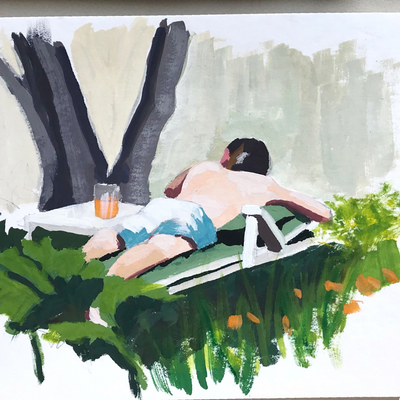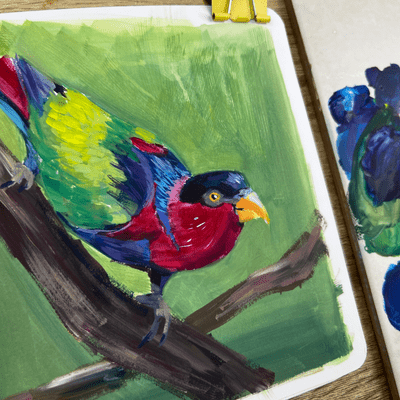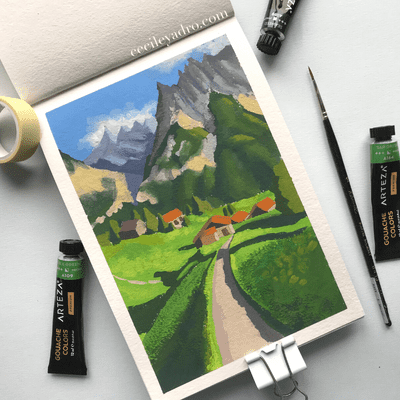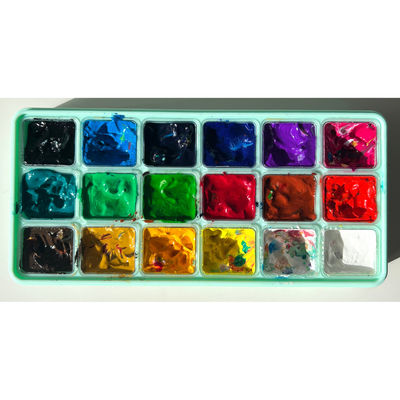Can you use gouache on canvas?
Gouache is a versatile medium that allows you to experiment with different techniques and effects. You can use gouache on canvas, and the main thing to remember is that you need a porous and absorbent surface so the paint will stick. Canvas is ideal for gouache because it meets these requirements.
Use a primed canvas for gouache painting.
If the canvas is already primed, you can apply gouache paint directly, and it will adhere well. You can use one or two layers of gesso if the canvas is not primed. Good quality priming is critical; if it’s not done right, your painting won’t stick and could be damaged later.
You can also prime the canvas with acrylic paint or add acrylic paint to the gesso to tone it. I’m using this transparent gesso:
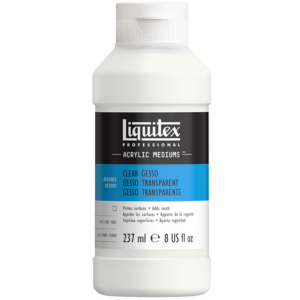
You can use a variety of different brushes for gouache painting. The brush you choose will depend on the effect you’re trying to achieve and your personal preferences. You can learn more about gouache brushes here.
Gouache is a water-based medium and can crackle if used too thick or on a soft surface. Your canvas must be well-tightened so it doesn’t move when applying paint. If your canvas is not well pulled, it may move around as you use gouache paint, which can cause cracking and warping of the surface. If this happens, there are several things you can do to fix it. Try stretching your canvas again or repair any damage caused by the cracking paint with a brush dampened with water.
Wait, I have some recommendations handpicked for you!!!
Here are my favorite supplies for gouache painting; you can check them out and buy them from @mazon, and I’ll get a tiny commission at no extra cost for you.



Use canvas paper.
For beginners, canvas paper may be easier to work with because it’s softer than stretched canvas. This way, you get the canvas texture on paper without tightening your stretched canvas. The canvas paper is available in many sizes, from small to large. It’s also possible to buy canvas-like paper made from synthetic materials rather than canvas fibers.
Yet, canvas paper can also be problematic: it’s very soft and can be bent. So if you twist your paper, it may make the gouache crackle. I advise framing it under glass so it’s not damaged. Canvas paper is also more expensive than other types of paper, and you may want to look into alternatives if you’re working on a budget.
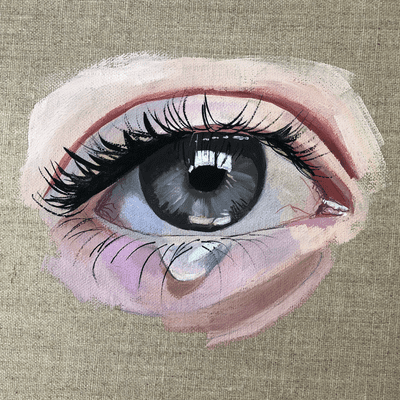
Use a soft textured canvas.
Choosing a soft textured canvas for detailed work is essential when applying gouache to canvas. The rough texture of some canvases might make it difficult for you to fill in all your details. You can also try using a soft textured canvas and a fine brush to help you paint all your details without any problems. If you want to use gouache on canvas, it’s best to choose one that’s smooth or slightly textured rather than rough.
Use small canvas
Gouache is a relatively expensive paint. While you can find small tubes for about $6, these are not very large and won’t last long. If you want to use gouache on canvas, we recommend using small canvases instead of large ones. While it might be tempting to use a larger canvas, you may spend more money than you need to. If you’re learning how to paint with gouache on canvas, it’s best to start small. You can always try painting on a larger canvas later if you feel like it.
Conclusion
Gouache is a wonderful medium to paint with. It’s easy to use, and you can apply it in many ways. We highly recommend experimenting with gouache on canvas, especially if you are a new artist. And you can try painting on different surfaces like cardboard or wood.

